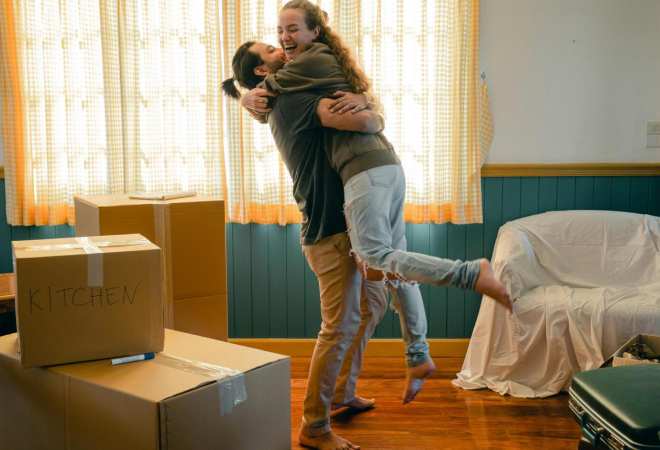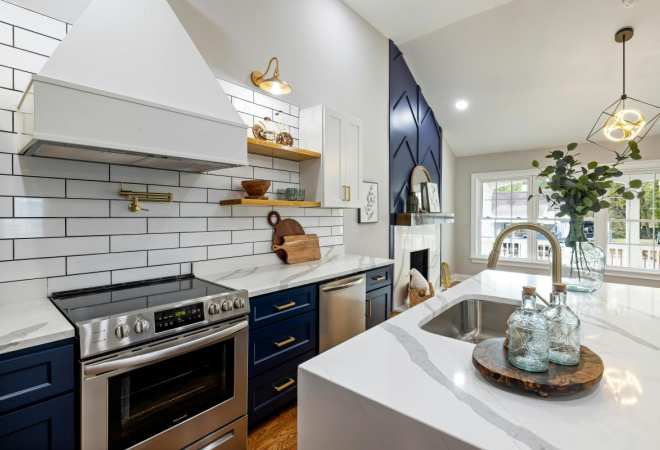A “newlywed nest” is about creating a unique and comfortable home for a couple starting their married life together. It’s a place where partners can make memories and build a foundation for the future. This concept emphasizes personalizing a space that reflects the couple’s unique style and needs.
For a bride-to-be, staying within budget guarantees the couple can enjoy their new home without the stress of overspending. It balances dreams and financial realities, ensuring this new journey's start is joyful and worry-free. This careful planning lays a strong foundation for a stable and happy married life.
Determining the Budget
Looking at current savings, income and expenses is imperative to understand what is realistically affordable. It helps make informed decisions about the size and location of the home and how much to allocate for interior design and furnishings.
Considering short-term and long-term goals is essential. Short-term obligations include buying furniture or renovating, while long-term objectives could be paying off the mortgage or saving for future family needs. Balancing these goals ensures immediate desires don’t overshadow future financial stability.
Moreover, including monthly property taxes in the budget is vital. Depending on the property location and value, these taxes can range between $500 and $1,000 monthly. Not accounting for this regular expense can lead to financial strain. Factor in these ongoing costs to guarantee the fees associated with the newlywed nest are manageable within the couple’s combined income.
Understanding and Planning for Additional Fees
When budgeting for a newlywed nest, it’s imperative to know various fees and costs. Here’s a list of standard fees and strategies to manage them.
Common Fees
- Closing costs: These can include loan origination fees, title insurance and appraisal fees.
- Inspection fees: Paying for a professional to inspect the home before purchase.
- Property taxes: Annual taxes based on the home’s value.
- Home insurance: Necessary to protect your investment.
- Maintenance and repair costs: Regular upkeep expenses.
- HOA fees: If the house is in a community with a homeowners’ association.

Strategies to Budget for Additional Costs
- Research and estimate: Research all potential fees and costs for a realistic estimate.
- Save a buffer: Aim to save 10%-20% of the home’s value for these costs.
- Emergency fund: Maintain a separate emergency fund for unexpected expenses.
- Regular savings plan: Include some home-related fees in your monthly budget.
It’s noteworthy that U.S. homeowners spend over $17,000 annually on homeownership costs, excluding the mortgage. This statistic highlights the importance of thorough budgeting and financial planning. By anticipating these costs and planning for them, couples can enjoy their newlywed home without unforeseen financial burdens.
Planning for a Down Payment
A down payment is the initial, substantial payment made when buying a home and it determines the mortgage terms. A larger down payment can lead to more favorable loan conditions, like lower interest rates and smaller monthly payments. It also means instant equity in the home, providing financial stability and a sense of security.
The 50/30/20 budgeting method is a helpful tool. It suggests that 50% of your income should go to necessities, including mortgage or rent, which aligns well with planning for a down payment and subsequent mortgage payments.
This method balances financial obligations, saving for the future and still enjoying some discretionary spending. By applying this principle, couples can wisely manage their finances, ensuring they save adequately for a down payment while covering all other necessary expenses.
Interior Design: Balancing Dreams and Budget
Understanding the role of an interior designer is essential for couples creating their dream home. They choose suitable color schemes, furniture and decor to ensure the design reflects the couple’s personal style and practical needs.
They also manage the project’s logistical aspects, bringing space planning and functionality expertise. The cost for these services in the U.S. averages between $10 to $17 per square foot, but this can vary based on the designer’s experience, project scope, location and design complexity.
When establishing a budget for interior design services, define your style and specific needs to avoid unnecessary expenses. Prioritizing critical areas of your home allows for a more significant impact on the design within your financial limits.

Furnishing Your Home
When developing a furniture budget for a newlywed nest, identify essential furniture pieces. It would help if you prioritized essentials, such as a bed, sofa, dining table and chairs. After covering these necessities, you can consider additional items based on the remaining budget and space availability. It ensures you meet the most critical needs and spend the budget wisely.
Additionally, considering home improvements that boost property value can be beneficial. For example, replacing a front door can yield about a 74.9% return on investment in property value, underlining the importance of intelligent spending on your new home.
Prioritizing and Allocating Funds
Identifying non-negotiables and must-haves is crucial in budgeting for a newlywed nest. You must maintain these aspects, be it the location of the home, its size, specific interior features or essential furniture pieces.
Once these non-negotiables are clear, allocating funds accordingly is easier, ensuring the most critical elements are secured first. This focused approach helps effectively manage the budget, prioritizing spending on what truly matters to the couple.
In addition, being flexible and willing to adjust the budget as needed can maintain financial stability. A general rule is that 30% of your gross income should go towards housing costs. This guideline provides a framework for understanding how much you can comfortably afford to spend on your newlywed nest without overextending financially.
Crafting a Financial Blueprint for Your Nest
Setting a clear budget is paramount when creating a newlywed nest. It is a financial roadmap, ensuring that spending aligns with what you can realistically afford, from home purchases to furnishings and decor.
Prioritizing financial stability also allows couples to enjoy their home without the burden of financial stress and lays a strong foundation for future goals and aspirations. Focusing on sound financial planning from the outset lets couples ensure a joyful and secure start to their married life.

Author Bio: Oscar Collins is the editor-in-chief at Modded, where he writes about a broad spectrum of topics. Follow him on Twitter @TModded for frequent updates on his work.
are you a bride or groom-to-be?
We'd love to plan with you on weddingday-online.com. Let's get started!
are you a wedding extraordinaire?
Join WeddingDay Magazine in inspiring brides by partnering with us! See how here.








Join the conversation
Log in or register to post comments